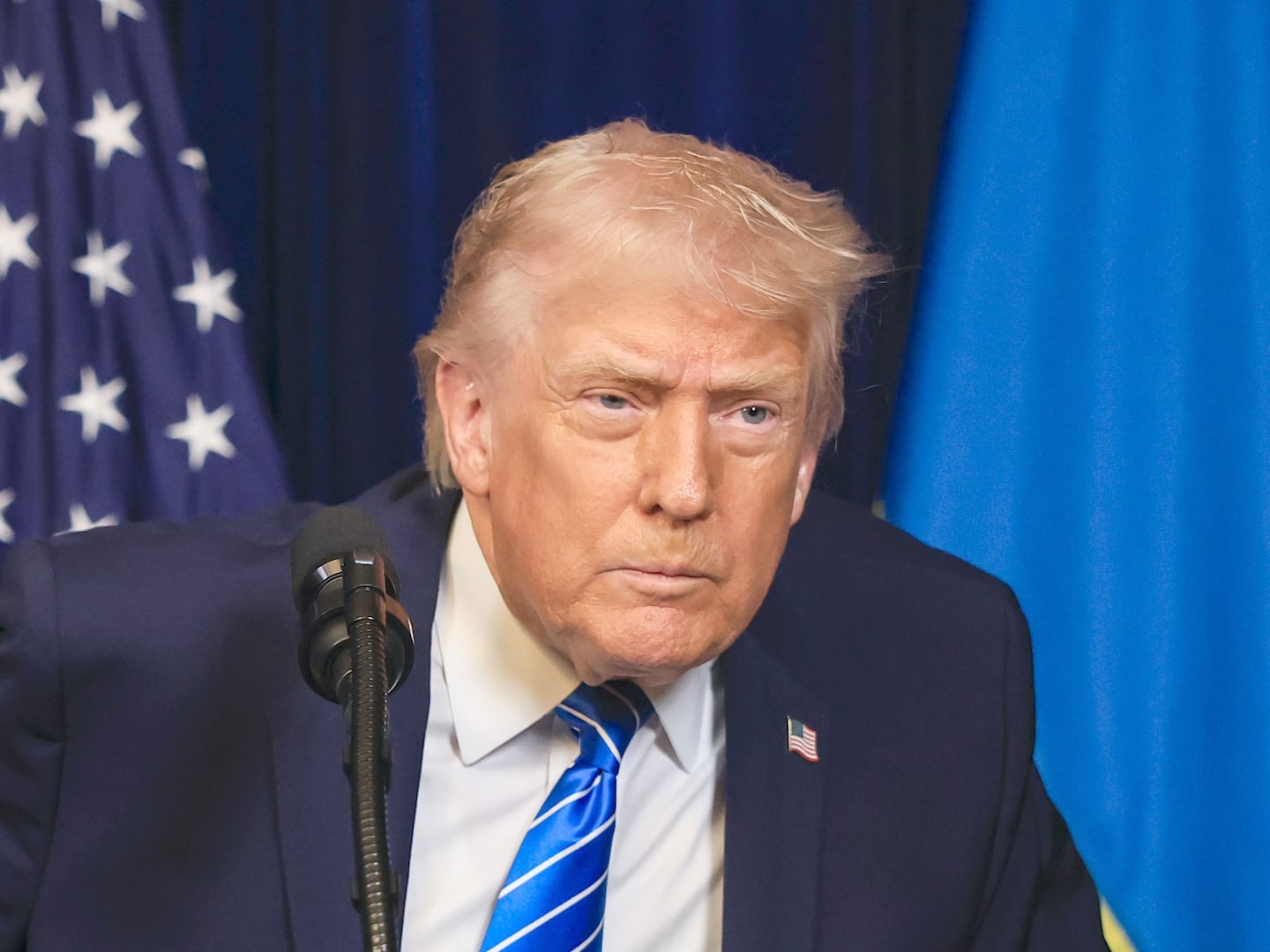Forget the Sandy Hook killer, but remember the Sandy Hook heroes such as 6-year-old Jesse Lewis, who had just seen his teacher shot when the gunman’s rifle jammed.
Rather than use this moment to save himself, Jesse called to some fellow first graders who were standing off to the side, holding hands.
“Run!” he told them.
In the next moment, Jesse was killed, but the other youngsters escaped. Six of them, four boys and two girls, ended up outside a small yellow frame house nearby that is home to a psychologist named Gene Rosen.
“We can’t go back to school,” one of the boys reportedly told Rosen. “Our teacher is dead.”
Rosen brought them inside and took out some stuffed animals he keeps for his grandchildren and began calling parents. One little girl sat clutching a toy dog, silently staring out a window until her mother came.
The last of the six survivors had been picked up when a woman appeared at the front door with a face that Rosen would later describe as frozen in terror. She had heard that some kids had come to the house and she hoped that maybe by some miracle her child was among them. The miracle was not to be. The child she named would be listed among the 20 kids who had been murdered along with six adults.
In the mid-afternoon, I found the house empty and still, the stuffed animals where the children had left them as they headed home, having escaped the killer thanks to the monumental courage of a tiny hero. I took note of a wood plaque that attested to the year the house had been built.
“1746”
That was 30 years before the Declaration of Independence, 45 years before the ratification of the Second Amendment. I wondered what the founding fathers—whom the gun rights people love to invoke—would have said if they had happened to pass by here back then and been suddenly bestowed with the gift of prophesy.
They no doubt would have been horrified enough if they could have foreseen the 1999 murder of 12 students and a teacher by a pair of teen killers at Columbine High School in Colorado. I was there in the immediate aftermath of that shooting as well. I remember standing in the parking lot, staring at a maroon Acura Legend that 17 year-old Rachel Scott had driven to school before becoming the first to be murdered, shot numerous times as she ate lunch.
Her friends were now covering the car with flowers and ribbons, placing four candles on the trunk along with a Bible that the gusting wind blew open, rustling the pages as if an unseen hand were searching vainly for an answer. A classmate in jeans and a brown flannel shirt used a fingertip to inscribe a message into the road grime just above the rear bumper.
“We love you.”
The biggest testament was the diversity of the mourners. A girl with Day-Glo red hair embraced a born-again Christian. An athletic-looking 16-year-old named Joe Dreaden explained that Rachel Scott had possessed a unique ability to reach across social cliques.
“Rachel was who she was,” he said simply.
In the late afternoon, that great mix of friends formed a circle around the car, holding hands as they prayed. They then prepared to release three dozen balloons, grey and blue, the colors of their school. A balloon popped and the sound was enough like a gunshot to make everybody jump.
“That was not fun,” one of the friends said.
The remaining 35 balloons sailed up into the fading daylight, vanishing as they were blown northward by a weather front that brought rain and then snow that the friend Dreaden later brushed away from the car, which Scott had been paying for by working in a sandwich shop. He uncovered a handwritten message another student had left.
“God danced the day these children were born. The Angels cried the day He carried them home.”
Among the survivors who had run in terror from the lunchroom when the shooting erupted was Regina Rohde, then 14. She was 22 when I encountered her in 2007 at Virginia Tech in the aftermath of the mass shooting there. She had been preparing to head for class when she got word of the killings, and this time she was spared the sound of gunfire. She stood holding her small, brown dog, declining to say anything to the press about either shooting. She did allow that she had not looked at the images of himself this latest killer had express mailed to NBC as he embarked on a spree that left 32 dead.
“I haven’t seen them,” she said.
I went from her to a gun store by Virginia Tech’s main gate where the killer was said to have ordered one of his pistols. I then proceeded to a nearby outdoor shooting range maintained by the U.S. National Park Service. The killer had practiced his marksmanship there, firing with the same methodical deliberation that would be recalled by the survivors. He is also believed to have filmed in the parking lot some of the images of himself he later sent to NBC.
Among the shooters at the range two days after the massacre were two Virginia Tech students. They were blazing away with a Glock-9, the same kind of gun the killer had used to such devastating effect.
“They should only give these to responsible people,” said one of the students, David Whitlow.
In a kind of manifesto, the Virginia Tech killer had written about the two Columbine killers. All three killers were studied by the twisted 20-year-old who would do the unimaginable at Sandy Hook, taking us from wondering when will the killing ever end to how could it have possibly have gotten to this?
The Sandy Hook killer was also a fan of Glocks. He sometimes posted on the popular online gun forum Glock Talk, which apparently sees no irony in a requirement for all new participants.
“You must register,” the site says.
Only when you are duly registered and have been cleared by the site administrator are you able to view postings such as the one in which the Sandy Hook killer once spoke of his Glock “fetish.”
But the Sandy Hook killer’s main weapon proved to be a Bushmaster .223 rifle. He fired 154 rounds with it in less than 11 minutes, killing a total of 26 people. He almost certainly would have killed more kids were it not for the bravery of Jesse Lewis.
Eleven months after the shooting, the Connecticut State Police released its report. I noted that among many other things a search of the killer’s room produced were “materials regarding the topic of pedophilia and advocating for rights for pedophiles.” I have always felt there was a sexual component to what the Sandy Hook killer himself termed a “fetish” over guns. I suddenly wondered if this explained why the killer had gone after kids, especially since the state police report maintained that he did not seem to have been bullied when he was a student at Sandy Hook.
After I wrote a piece suggesting that the Sandy Hook killer may have been acting out of some kind of homicidal pedophilia I got a call from a woman who said she represented the families of the murdered children. She informed me that the families had been greatly distressed and offended by the article, which she described as the single worst piece they had read. The only response I could think to off was to apologize and assure her that other than the families themselves nobody could feel worse about it than I did. She then demanded to know why I had written such a thing. I could only say that I had gone from killing to killing to killing for year after year after year and it was simply an attempt to address a question the state police had taken pains to avoid: why?
Another question is how? The answer to that is easy; it was with a weapon capable of firing that many bullets in that short a time.
The Sandy Hook Elementary School has been torn down, but the yellow house still stands with its plaque attesting to having been built before the founding fathers even promulgated the Second Amendment. That they drafted it as they did seems to me proof they did not imagine anything like the Sandy Hook Massacre could occur. They surely would have been much more precise in their language about the importance of a militia if they had known that as it was written the amendment would help to put guns in the hands of killers at Columbine and Virginia Tech and so many other places.
Such a massacre could not have happened back then, and not just because Sandy Hook had only a one-room schoolhouse. The arms that the founding fathers said we had a right to bear were single shot muskets. Everybody save for perhaps one unlucky soul would have had a chance to escape while the would-be mass murderer was forced to reload.
What seems certain as you now stand by that yellow house built in the time of the founding fathers is that they would be horrified to know that something they drafted in the name of freedom had contributed to 20 school children being murdered along with six adults.
Would the founding fathers not join the angels in crying if they saw those half dozen terrified survivors sitting by that plaque reading 1746, saying they could not go back to school because somebody had shot their teacher?






